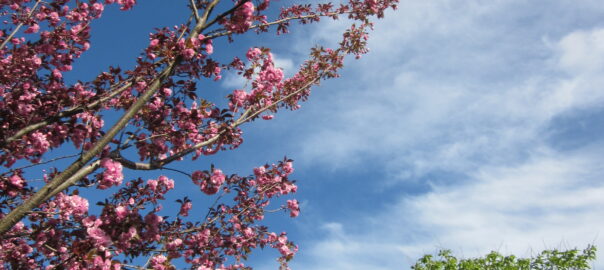
It seems that everywhere we look in our gardens there’s lots of plant colors to enjoy: red, pink and white azaleas, pink rhododendrons, early white dogwoods, pink bleeding hearts, white Deutzia gracilis, creeping phlox, Virginia bluebells, and variegated Solomon’s seal, to name a few.
Even the emerging leaves of different hostas and irises add to the color palette, as do the many dandelions, creeping Charlie, and wild violets in bloom in our so-called lawn.
Speaking of the so-called lawn, it does seem magical when the crabapple tree blossoms rain down and swirl around in the breeze, ultimately covering both garden plants and the lawn in a pink haze.
And, to be perfectly honest, we’ve ordered some artificial blossoms online for our front-steps planter since we haven’t been able to go shopping for fully-grown plants during the stay-at-home directives.
On a very positive note, we hung two new hummingbird feeders and had our first visitors on May 5. Not only are the red plastic feeders colorful, but they also feature built-in bee guards and an “ant moat” that protect the nectar supply. So far we have not seen any bees or ants on the feeders!
While on the subject of visitors, we have seen several coyotes, large turkeys, and many squirrels, bunnies and chipmunks. Not happy about them.
But, certainly among the beautiful and colorful delights is the Mother’s Day gift from my wonderful grandson. As I write this column, his floral arrangement is still bringing joy to my heart.
I am blessed!

